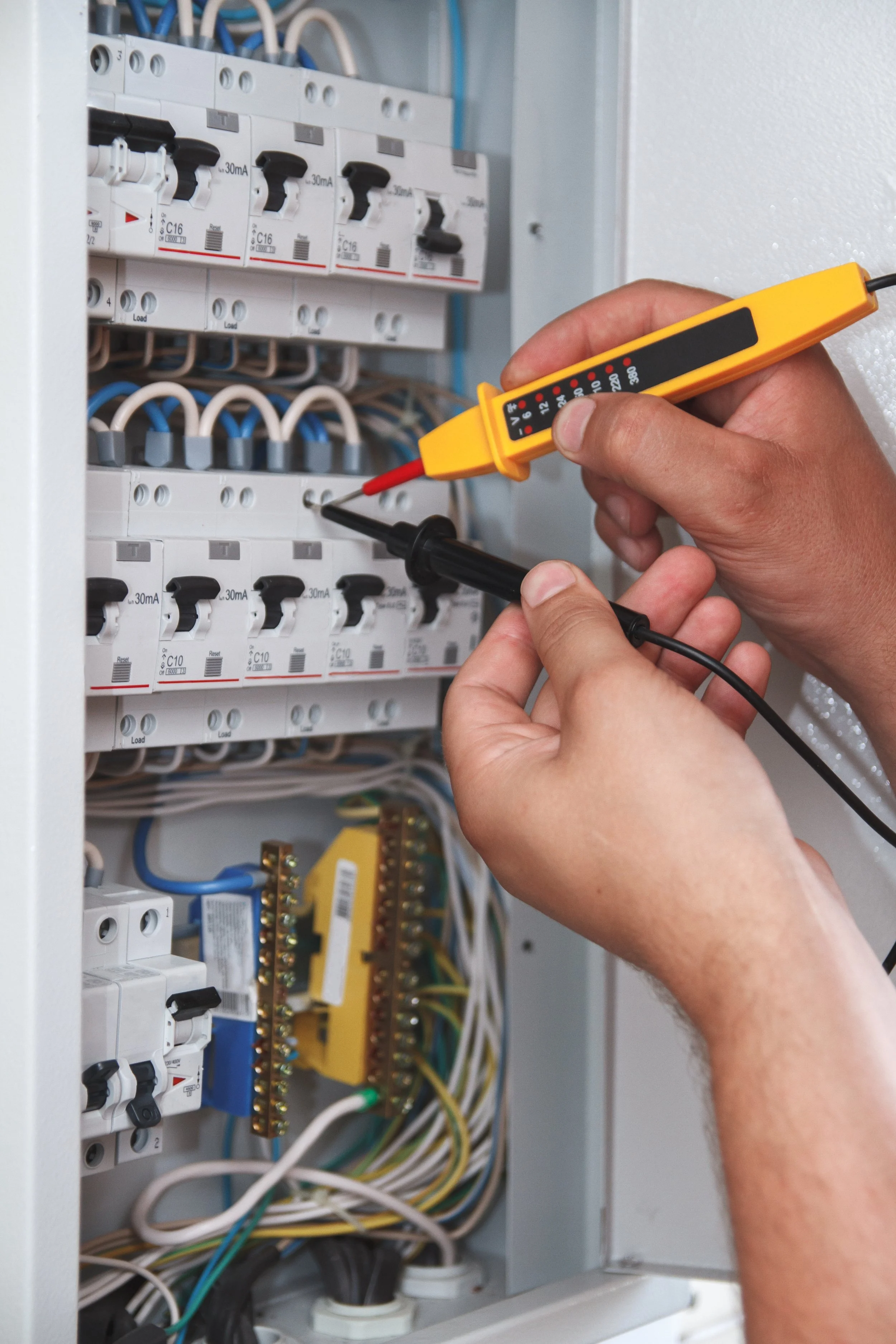Preventative Maintenance
Stay ahead for the curve. We take a proactive approach to identifying and addressing potential issues before they lead to equipment failure, downtime, or safety hazards.
-
Establish a regular schedule for comprehensive inspections of electrical systems, including distribution panels, switchgear, control panels, and machinery. Regular inspections help identify early signs of wear, loose connections, or other issues.
-
Conduct periodic thermal imaging inspections to identify hotspots in electrical components. An infrared camera can detect elevated temperatures, indicating potential problems such as loose connections or overloaded circuits.
-
Regularly check and tighten electrical connections. Loose connections can lead to arcing, overheating, and equipment failure. Ensure proper torque values are maintained for bolts and connections.
-
Keep electrical equipment and panels clean from dust, dirt, and debris. Accumulated debris can contribute to overheating and reduce the efficiency of cooling systems
-
Perform visual inspections of cables, wires, and insulation for signs of wear, damage, or deterioration. Replace or repair any components showing signs of degradation.
-
Ensure that emergency stop systems, such as kill switches or emergency buttons, are tested regularly to verify their proper functionality. These systems are crucial for quickly shutting down equipment in case of an emergency
-
If the facility has backup generators, conduct regular testing to ensure they are in working order. This includes testing the starting mechanisms, load transfer switches, and overall generator performance
-
Install power quality monitoring systems to track voltage fluctuations, harmonics, and other power quality issues. Addressing power quality concerns can prevent premature equipment failure
-
Regularly test and, if necessary, replace batteries in uninterruptible power supply (UPS) systems. Reliable battery backup is essential for critical equipment during power outages
-
Maintain detailed records of all preventative maintenance activities. Document inspections, repairs, replacements, and any changes made to the electrical system. This documentation aids in tracking trends and planning future maintenance
-
Ensure that facility personnel are trained to recognize potential electrical issues. Encourage reporting of any abnormal conditions or concerns related to the electrical system
-
Ensure that all maintenance activities adhere to relevant electrical codes, standards, and regulations. This includes obtaining necessary permits for maintenance work.


